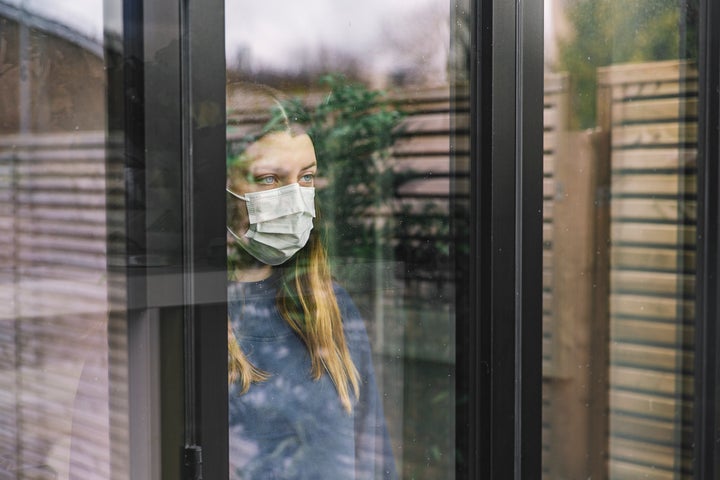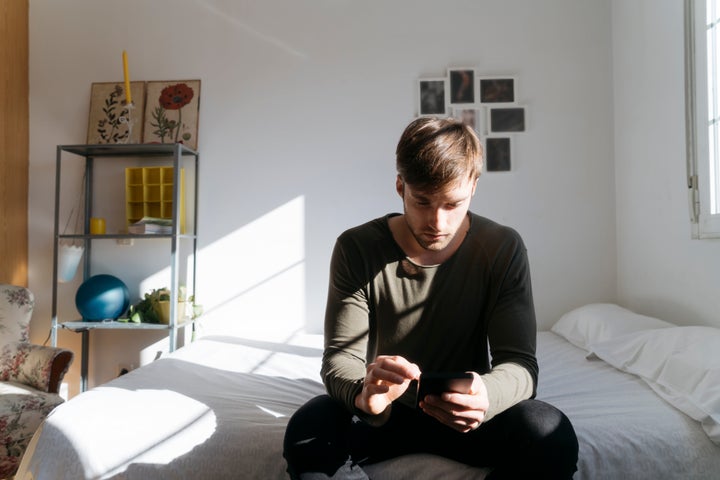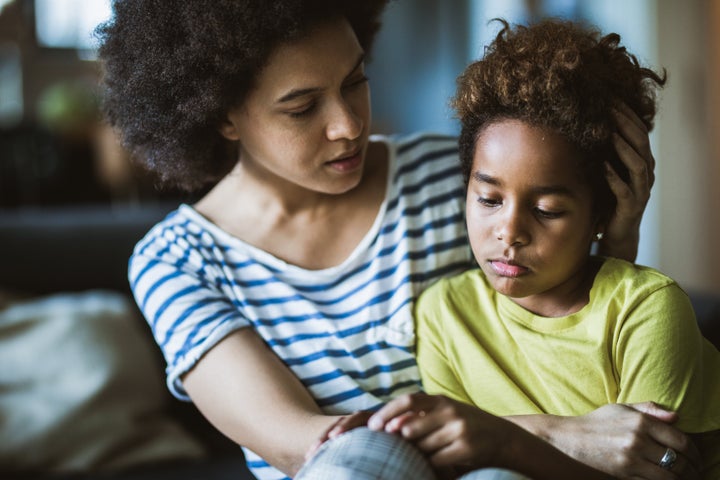There’s one question that New York City psychologist and anxiety specialist Amelia Aldao has heard almost every day from her clients since the coronavirus pandemic began: “When is this all going to end?”
“That question creates a lot of anxiety,” Aldao told HuffPost. “This uncertainty we’re all experiencing makes us seek more reassurance and certainty. Because that’s not possible, it just makes us feel more anxious.”
We’re all feeling it. In fact, New York City psychologist Andy Schwehm said some of his clients who have not experienced a lot of trauma or hardships in the past have been the most rocked by the public health crisis. Meanwhile, many of his clients with previous trauma are doing “remarkably well.”
“One of them even said, ‘Now everyone sees what it’s like to be me every day,’” he told HuffPost.
Regardless of your mental and emotional well-being prior to the pandemic, Aldao and Schwehm worry that the pandemic and quarantine will have long-reaching effects on people’s mental health.
“Right now of course, everyone is going through his or her own way of coping with this,” Schwehm said. “Although it’s important to remember that we can only control what we can control, there are going to be a lot of unknowns for a long time.”
Below, Schwehm and other experts shared five ways the COVID-19 crisis and social distancing in particular might affect our collective mental well-being.
1. Some people may develop post-traumatic stress disorder
Many people hear the acronym “PTSD” and their thoughts immediately turn to veterans. But PTSD can be triggered by nearly any distressing event: sexual assault, natural disasters, terrorist attacks, a bad car accident, mass shootings, a global pandemic.
The coronavirus pandemic is a particularly traumatic experience for a number of reasons, Aldao said, including fear of catching the virus and the economic impact on people. She also said social distancing measures can alter people’s mental health in a profound way.
“There’s an inherent grief that comes with social distancing and how our social lives have changed drastically and will continue to change over time,” Aldao said. “Plus, again, there’s that additional element that makes this crisis particularly traumatic: We don’t know when it’s going to end. We ask ourselves, ‘When is my city reopening?’ ‘When can my kids go back to school?’ ‘When will I be able to travel again?’ and so on. There’s great uncertainty, which in turn fuels our anxiety and increases our stress level. That can easily cause trauma.”
Elyssa Barbash, a psychologist in Tampa, Florida, said she is also concerned about PTSD-like symptoms among her clients who have been stuck at home.
“When we talk about the future, many clients are saying they’re hesitant to come into the office even though we are able to maintain the 6-foot social distancing guidelines,” Barbash told HuffPost. “There is noticeably increased awareness and anxiety about germs, contamination, fear over the unknown, sadness and grief over the significant changes in lifestyle, particularly not being able to do things as easily and carelessly as we previously have.”

2. Anxiety over going out — and potentially, agoraphobia — may become a lot more common
We’ll likely see increased rates of anxiety, with more and more of us worried about our health and safety going back out in public again. (“If coronavirus gets worse ― or if we face another novel virus in the future — will I get sick? Will my family get sick?”)
For some people, the anxiety may develop into a mental health condition: Agoraphobia. People with this particular anxiety disorder feel a deep fear over leaving their homes ― or any other safe place ― and finding themselves in an area that may cause panic or make them feel trapped, helpless or embarrassed.
Because we have been at home for so long during this pandemic ― especially under the “safer at home” guidelines many states have established ― there is a high likelihood that some people will go on to develop agoraphobic symptoms, if not outright agoraphobia, Barbash said.
“People may adjust to the behavior of being home often and the innate comfort this brings, particularly with the belief in mind that they are definitely safe in their home where the environment is controlled, which to a large extent is true,” she added. “In the long run, of course, that’s not a realistic or satisfying way of living your life.”
3. Some people may develop depression from lack of social connections
Social distancing can result in a decline in both perceived social support (how much support we believe we’re getting from close friends and family) and received social support (how much quantifiable social support we’re actually getting), according to Sarah Lowe, an assistant professor of social and behavioral sciences at Yale’s School of Public Health.
“A lack of social support can increase the risk for a variety of mental health problems, including depression,” Lowe told HuffPost. “Although people are connecting virtually, that’s not always equivalent to the types of support that people get from a large variety of social network members — neighbors, colleagues, store clerks, etc. — on a regular basis.”
Seeing your friends and family on Zoom can be a balm in stressful times, but it lacks the physical aspect of connection — seeing someone on your iPhone screen is just not the same as seeing them in person.
Poor social support has been linked to depression, and loneliness has been shown to increase the risk of depression, suicide, alcohol use and cardiovascular disease.
“I hear a lot about people getting screen fatigue, decreasing their motivation to connect virtually,” Lowe said. “That’s troubling.”

4. Risk of suicide may increase
Some mental health experts believe the coronavirus pandemic has created a “perfect storm” for a possible increase in overall suicide risk. Rory O’Connor, a professor of health psychology and director of the Suicidal Behavior Research Laboratory at the University of Glasgow in Scotland, is among those who are worried.
“My concern is that we may experience the mental health and social consequences of the coronavirus crisis for months and years to come,” O’Connor told HuffPost. “With regards to suicide, although a rise in suicide is not inevitable, experience from previous epidemics and economic recessions suggests that suicide rates could increase, especially in vulnerable groups.”
All of the factors at play in the COVID-19 pandemic ― increased stress and anxiety, financial uncertainty coupled with loneliness and social isolation ― could play a role in suicide risk, he said. In combination, they are especially concerning.
To address these concerns, O’Connor and his research team at the lab are conducting a longitudinal study of 3,000 adults from across the United Kingdom about their mental health during this time.
Like the pandemic, their research is ongoing. At six different points in time, the researchers are asking people a wide range of questions to assess levels of depression, anxiety, stress, loneliness and suicidal thoughts and attempts, as well questions about what is helping them through this crisis, including social support and coping methods.
“That is why we need to act now — to identify who is most vulnerable and then to ensure that the appropriate mental health and social supports are put in place to mitigate this risk,” O’Connor said.
5. Kids may experience long-term mental health effects, too
When considering the long-term fallout of the outbreak, Schwehm said he is most concerned about the impact it will have on children.
“With the pandemic, you have a lack of proper schooling, social isolation and, for some, exposure to issues like increased domestic violence and lack of proper nutrition, amongst others,” he said.
To understand how the virus may affect children during these formative years, Schwehm said we might be able to look at the aftermath of the Sept. 11 terrorist attacks for answers.
“We’ve seen the effects something like 9/11 had on children, with increased rates of behavioral problems and depression in children in New York City,” he said. “This might be especially true for children whose parents are serving as essential workers: medical staff, grocery store workers.”

Some ways to cope:
The potential mental health effects of COVID-19 will last much longer than the pandemic itself.
“That’s why each national government needs to put in place economic, social and mental health safety nets to protect the most vulnerable,” O’Connor said.
On a personal level, you can take action to address some of your concerns before they balloon into something worse. In moments when you’re worrying about what the coming months might look like, Aldao suggests keeping your focus on two things: the immediate future ― your plans for the week or weekend, for example ― and the very distant post-social distancing future.
“I’ve been telling my clients to focus on very long-term goals,” she said. “For instance, what they want to do with their career in three years or what type of long-term relationship are they interested in having.”
By taking the focus away from this immediate, uncertain future, you can steadily lower your general uncertainty about things.
“Also, I’d say building habits and routines is a great way of adding predictability to our lives and thus feel less uncertainty, which in turn makes us feel less anxious,” Aldao added.
While social distancing, lean into your support system. Sure, sometimes joining another Zoom call feels like just another item on your to-do list (and obviously, it can’t compete with in-person gatherings), but you’ll likely feel a lot better about the state of things after talking to your loved ones.
“It’s going to be incredibly important for people to find and lean into support to help them adjust to what will undoubtedly be a new way of living,” Schwehm said.
In other words, the pandemic is certain to change the way we function ― but it doesn’t have to change the lasting bonds you have with the people you love if you harness all the technology that’s available.
If your stress worsens, consider talking to a professional. Since traditional in-person therapy isn’t possible right now, many are turning to teletherapy ― videoconferencing with a mental health expert ― to get help.
If you’re experiencing serious emotional distress related to COVID-19 and are considering self-harm, call 1-800-273-8255 for the National Suicide Prevention Lifeline. You can also text HOME to 741-741 for free, 24-hour support from the Crisis Text Line. (Outside of the U.S., please visit the International Association for Suicide Prevention for a database of resources.)
If you’re worried about your kids, know that during moments of upheaval like this, what children need most from their parents is to feel safe, loved and protected, said Denise Daniels, a child development expert and creator of The Moodsters, a brand focused on fostering emotional intelligence in kids.
“Offer comfort and reassurance of their safety,” Daniels told HuffPost in March. “Increase physical contact during times of uncertainty. Talk about all the people that are working hard to keep them safe.” (Head here for more advice on how parents can ease the blow of social distancing.)
Experts are still learning about the novel coronavirus. The information in this story is what was known or available as of press time, but it’s possible guidance around COVID-19 could change as scientists discover more about the virus. Please check the Centers for Disease Control and Prevention for the most updated recommendations.
A HuffPost Guide To Coronavirus
Credit: Source link